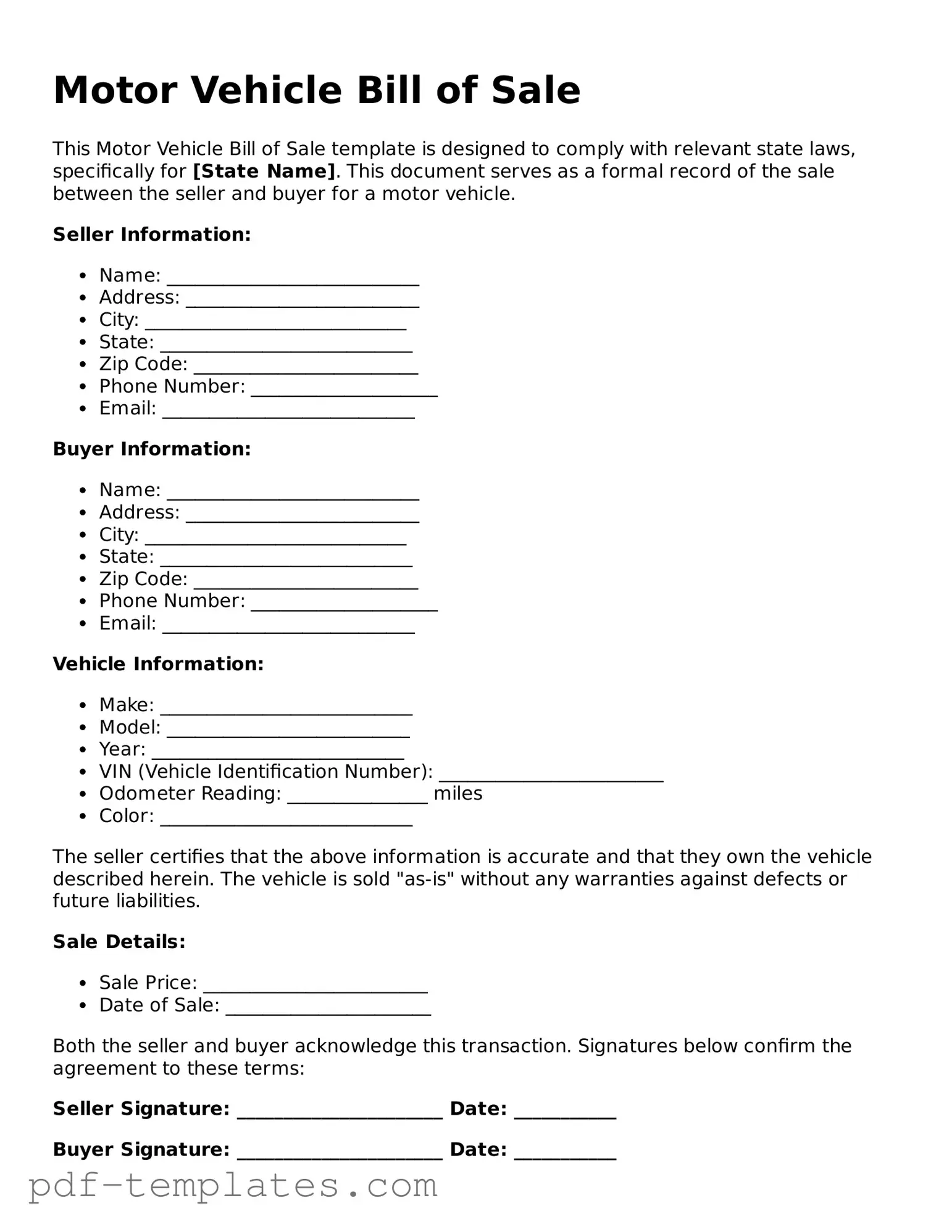The Motor Vehicle Bill of Sale form shares similarities with the General Bill of Sale. Both documents serve as proof of a transaction between a buyer and a seller. They outline essential details such as the item being sold, the purchase price, and the parties involved. While the General Bill of Sale can apply to various items, the Motor Vehicle Bill of Sale specifically pertains to vehicles, providing additional information like the vehicle identification number (VIN) and odometer reading.
Another document that resembles the Motor Vehicle Bill of Sale is the Vehicle Title Transfer. This document is crucial when ownership of a vehicle changes hands. Similar to the Bill of Sale, the Vehicle Title Transfer includes the seller's and buyer's information, along with vehicle details. However, the title transfer is often required by the state to officially record the new owner, while the Bill of Sale serves as a receipt for the transaction.
The Lease Agreement also shares some common ground with the Motor Vehicle Bill of Sale. Both documents outline the terms of an agreement between parties. In the case of a Lease Agreement, it details the rental terms for a vehicle, including duration and payment obligations. While the Bill of Sale signifies a purchase, the Lease Agreement establishes a temporary arrangement, yet both require clear identification of the vehicle and parties involved.
A Purchase Agreement is another document that parallels the Motor Vehicle Bill of Sale. This legal contract outlines the terms of a sale, including price, payment method, and delivery details. While a Purchase Agreement can apply to various goods, the Motor Vehicle Bill of Sale is tailored specifically for vehicles. Both documents protect the interests of the buyer and seller by providing a clear record of the transaction.
The odometer disclosure statement is similar to the Motor Vehicle Bill of Sale in that it provides important information about a vehicle's mileage. This document is often included with the Bill of Sale to ensure transparency regarding the vehicle's condition. Both documents require signatures from the seller and buyer, emphasizing the need for honesty in the sale process.
The Warranty Deed has some resemblance to the Motor Vehicle Bill of Sale, particularly in terms of transferring ownership. While a Warranty Deed is used for real estate transactions, both documents include details about the parties involved and the property being transferred. They also serve as legal proof of ownership, ensuring that the buyer has a legitimate claim to the item or property.
The Affidavit of Ownership is another document that can be compared to the Motor Vehicle Bill of Sale. This affidavit is often used when a vehicle is being sold without a title. Similar to the Bill of Sale, it provides proof of ownership and includes details about the vehicle and the seller. Both documents help facilitate the transfer of ownership and can be used in legal situations to establish rightful ownership.
Finally, the Release of Liability form is akin to the Motor Vehicle Bill of Sale in that it protects the seller after the sale. This document releases the seller from any future claims related to the vehicle once it has been sold. While the Bill of Sale serves as proof of the transaction, the Release of Liability ensures that the seller is no longer responsible for the vehicle, providing peace of mind for both parties involved.
